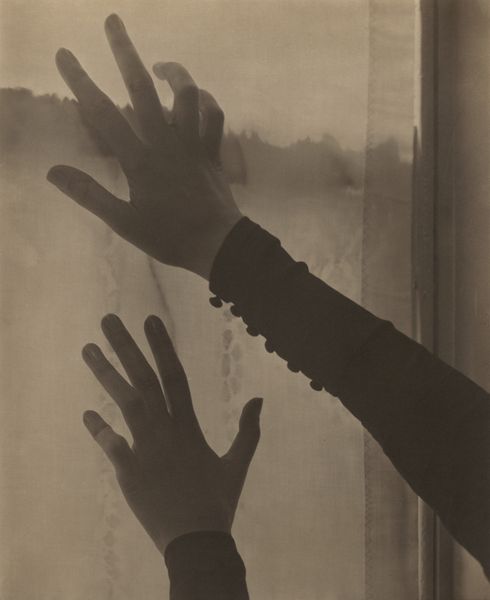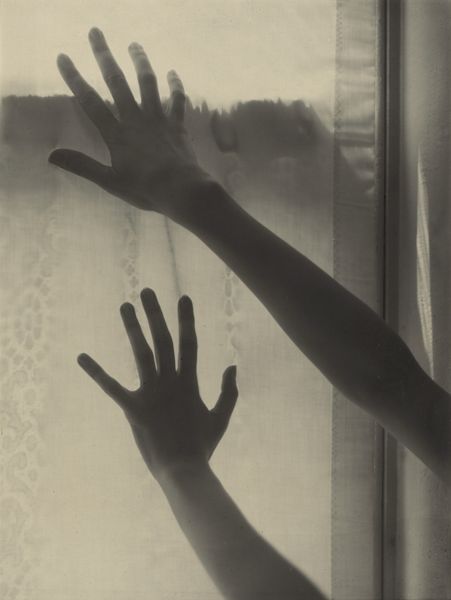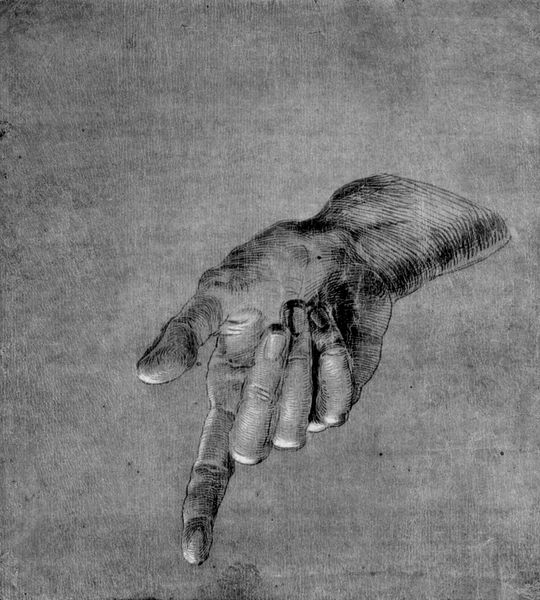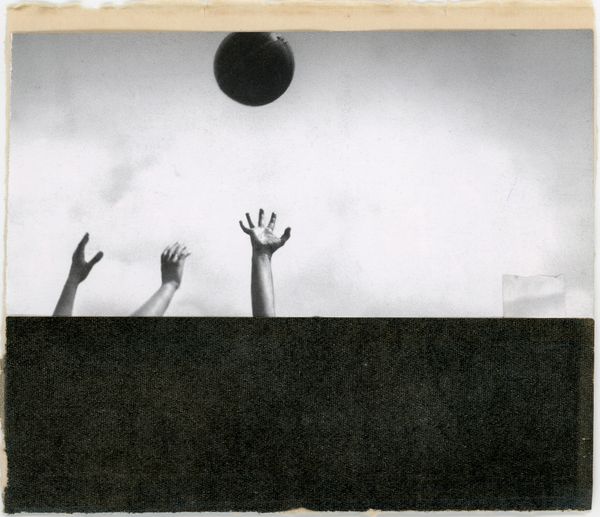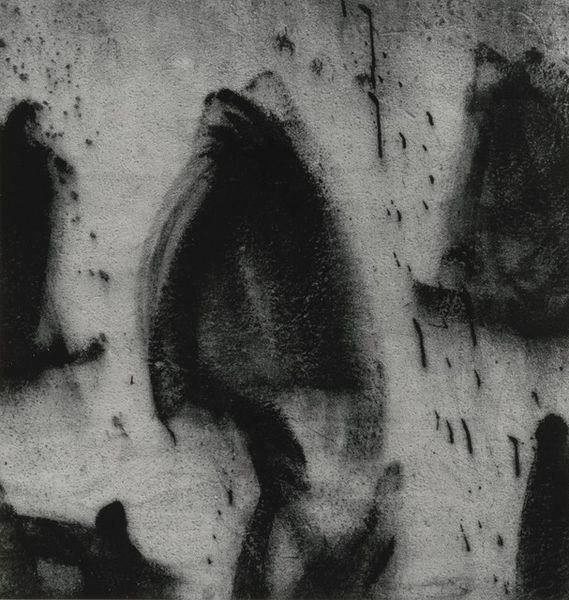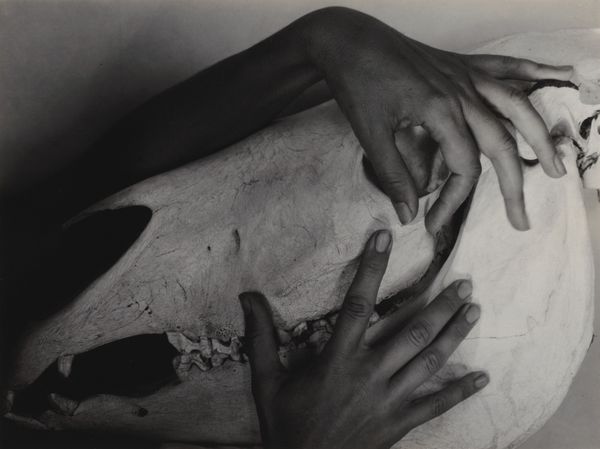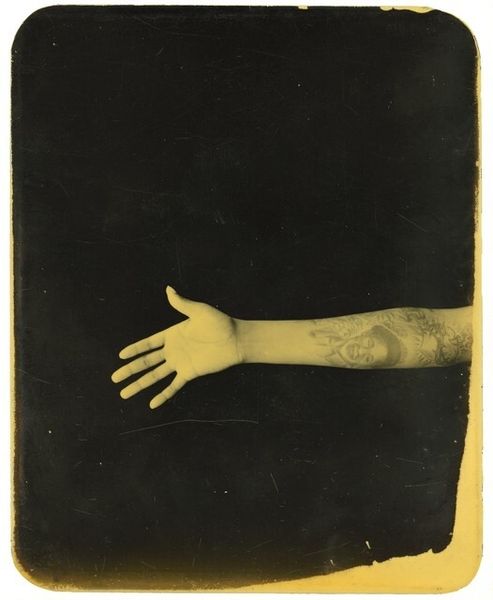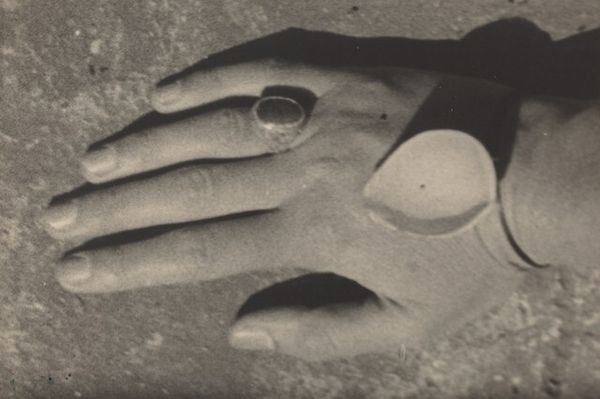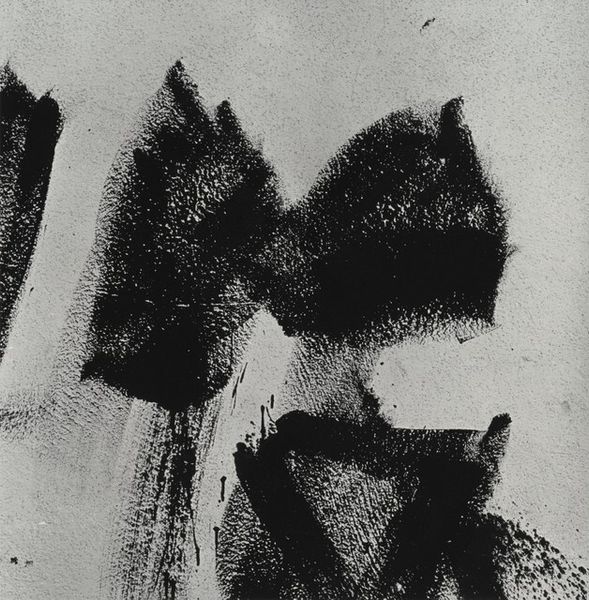
Dimensions: image: 39.2 × 34 cm (15 7/16 × 13 3/8 in.) sheet: 50.8 × 40.64 cm (20 × 16 in.)
Copyright: National Gallery of Art: CC0 1.0
Editor: We're looking at Aaron Siskind's "Iquitos 139" from 1980, a photograph rendered with mixed media techniques. The stark contrast and seemingly distressed surface give it a ghostly, almost unsettling feeling. What do you make of this image, particularly in terms of its historical context? Curator: This piece resonates with themes prevalent during the late 20th century. Siskind's photograms often engage with abstraction and form, yet here, the handprints introduce the spectre of the human figure – a direct engagement with the body at a time when identity politics were becoming increasingly crucial. The "distressed surface" you mentioned feels indicative of a societal unease. Could these hands represent reaching out, or perhaps fading away? Editor: Fading away...that's an interesting perspective. The location in the title, "Iquitos," makes me wonder about potential political implications. Could this imagery be linked to the socio-political realities of that region? Curator: Precisely. The choice of location is rarely arbitrary. "Iquitos" may ground the work within a specific geopolitical context, potentially alluding to power dynamics, historical exploitation, or issues of representation concerning Indigenous communities. How does knowing this influence your perception of the hands? Do they now convey a different kind of struggle? Editor: It definitely shifts the reading. Now, I see those imprints as a statement about visibility and perhaps, resistance. It makes me think about how often marginalized voices are silenced or erased. Curator: And it is precisely that layering of aesthetic choices and socio-political realities that makes Siskind's work so potent. It forces us to confront uncomfortable truths about ourselves and the world around us. It asks us to consider who has the power to leave a mark and whose marks are systematically erased. Editor: I never considered the implications of location and power dynamics in abstract expressionism like this. It opens up a whole new way of interpreting the piece! Curator: Indeed! And that is the continuous work we must do in thinking about the agency behind creating and understanding art. It really expands how we think about not just art, but our place in a larger narrative.
Comments
No comments
Be the first to comment and join the conversation on the ultimate creative platform.
